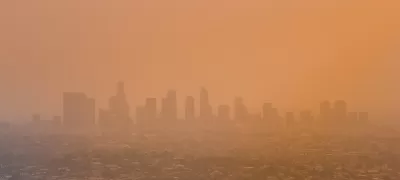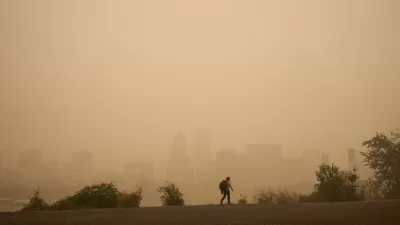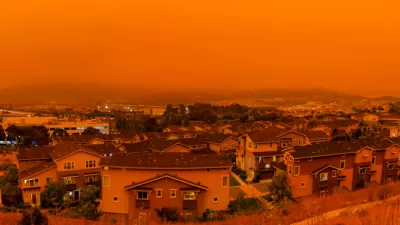Wildfires like those in Los Angeles that destroy urban structures release toxic chemicals, including lead, into the air.

A group of lawmakers are calling on the Environmental Protection Agency (EPA) to monitor air quality in Los Angeles as the city recovers from recent wildfires.
According to an article by Ben Poston for the Los Angeles Times, “While the Eaton, Palisades and other fires spewed dangerous chemicals into the atmosphere, air quality readings in the region didn’t fully capture all the wildfire pollutants, air quality officials cautioned.”
Poston adds that some toxic substances, including asbestos, are not detectable under current air quality standards. “This lack of full information could increase the risk of long-term negative health effects, especially among vulnerable populations like children, pregnant women, and the elderly, regardless of whether or not people are in areas that have been directly impacted by wildfires,” wrote U.S. Reps. Laura Friedman (D-Glendale), Judy Chu (D-Monterey Park), and Brad Sherman (D-Sherman Oaks) in a letter to the EPA.
Now, those lawmakers are asking to convene a task force to improve air quality monitoring. “The lawmakers are also requesting that the EPA use ‘all tools at their disposal’ to regularly monitor air, water and soil hazards, including ash, lead, asbestos and chlorine.”
The Los Angeles fires, which consumed hundreds of urban structures, created “highly elevated levels” of lead (“a heavy metal that has no safe level of exposure for anyone and can permanently stunt the development of children when inhaled or ingested”) in the air miles downwind from the fire areas.
FULL STORY: Is it safe to breathe in L.A.? Lawmakers call for federal action to monitor wildfire pollutants

Study: Maui’s Plan to Convert Vacation Rentals to Long-Term Housing Could Cause Nearly $1 Billion Economic Loss
The plan would reduce visitor accommodation by 25,% resulting in 1,900 jobs lost.

North Texas Transit Leaders Tout Benefits of TOD for Growing Region
At a summit focused on transit-oriented development, policymakers discussed how North Texas’ expanded light rail system can serve as a tool for economic growth.

Why Should We Subsidize Public Transportation?
Many public transit agencies face financial stress due to rising costs, declining fare revenue, and declining subsidies. Transit advocates must provide a strong business case for increasing public transit funding.

How to Make US Trains Faster
Changes to boarding platforms and a switch to electric trains could improve U.S. passenger rail service without the added cost of high-speed rail.

Columbia’s Revitalized ‘Loop’ Is a Hub for Local Entrepreneurs
A focus on small businesses is helping a commercial corridor in Columbia, Missouri thrive.

Invasive Insect Threatens Minnesota’s Ash Forests
The Emerald Ash Borer is a rapidly spreading invasive pest threatening Minnesota’s ash trees, and homeowners are encouraged to plant diverse replacement species, avoid moving ash firewood, and monitor for signs of infestation.
Urban Design for Planners 1: Software Tools
This six-course series explores essential urban design concepts using open source software and equips planners with the tools they need to participate fully in the urban design process.
Planning for Universal Design
Learn the tools for implementing Universal Design in planning regulations.
City of Santa Clarita
Ascent Environmental
Institute for Housing and Urban Development Studies (IHS)
City of Grandview
Harvard GSD Executive Education
Toledo-Lucas County Plan Commissions
Salt Lake City
NYU Wagner Graduate School of Public Service





























